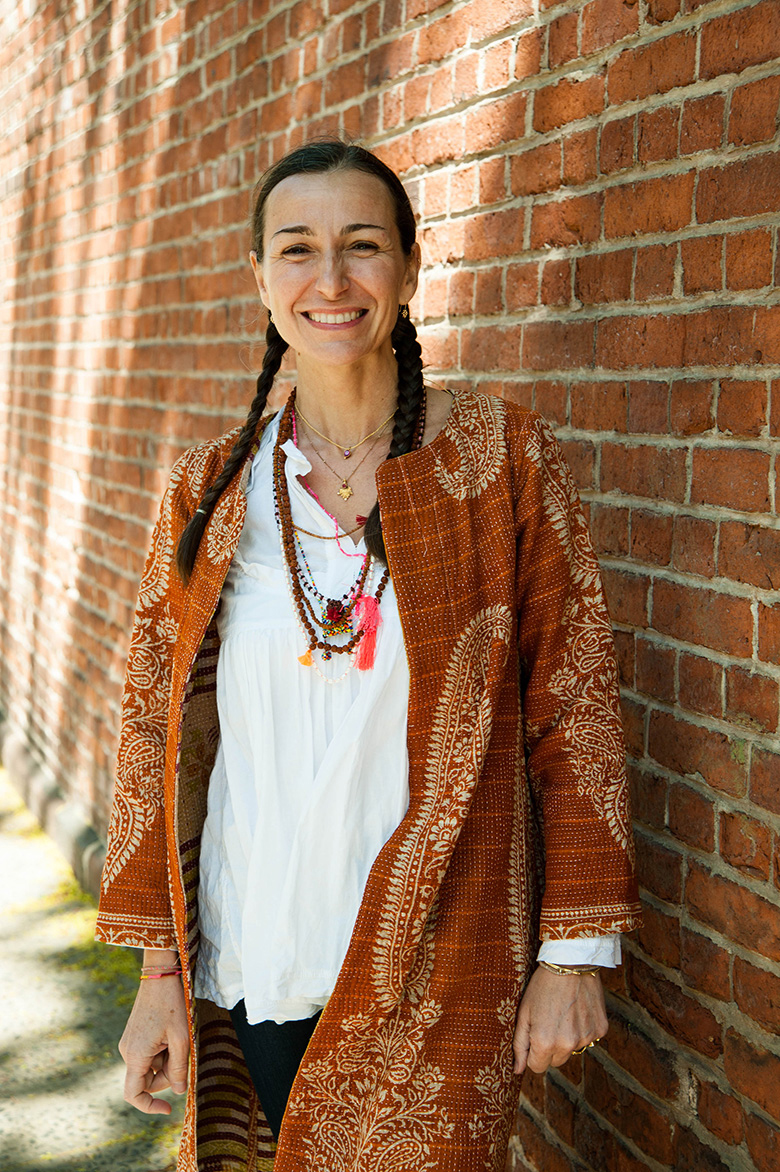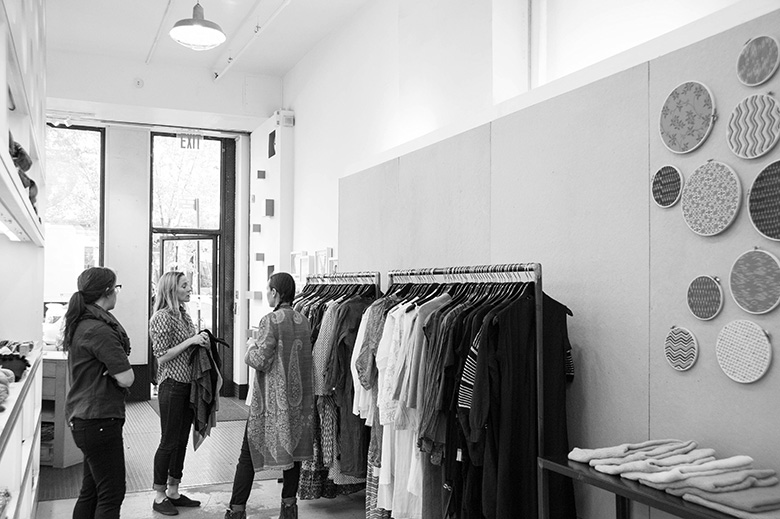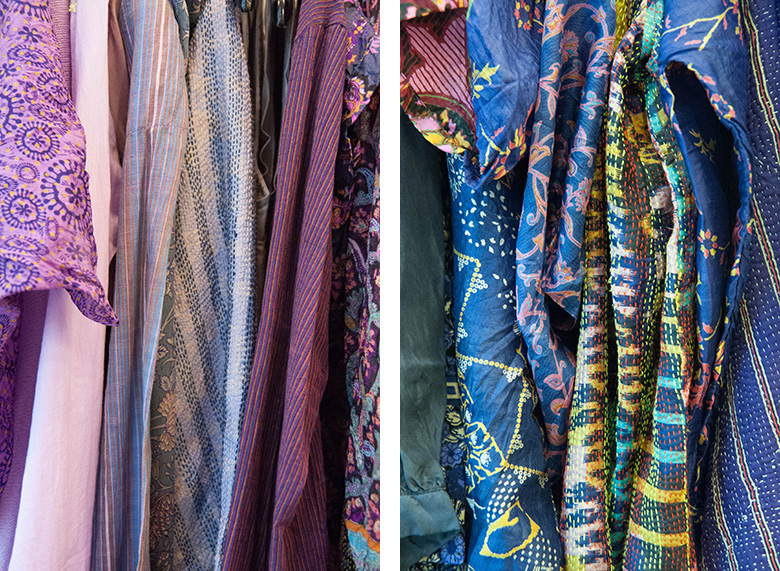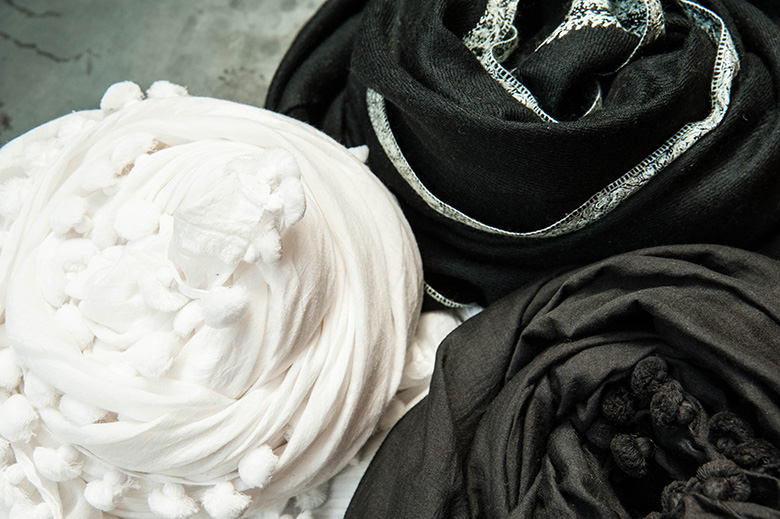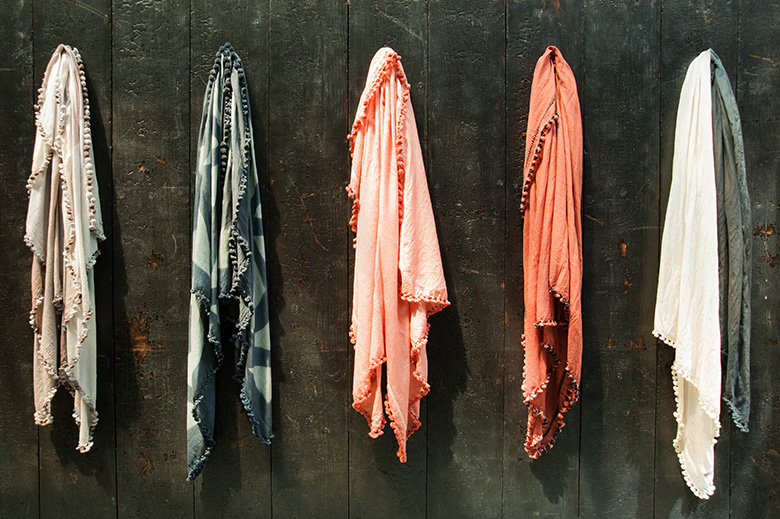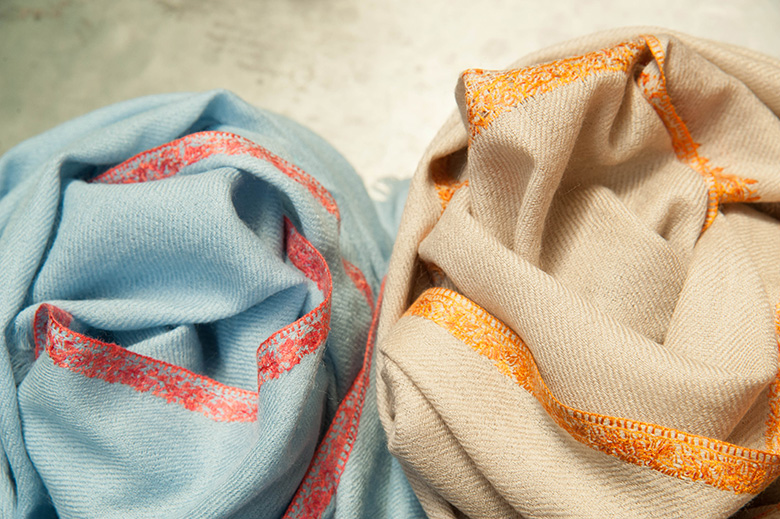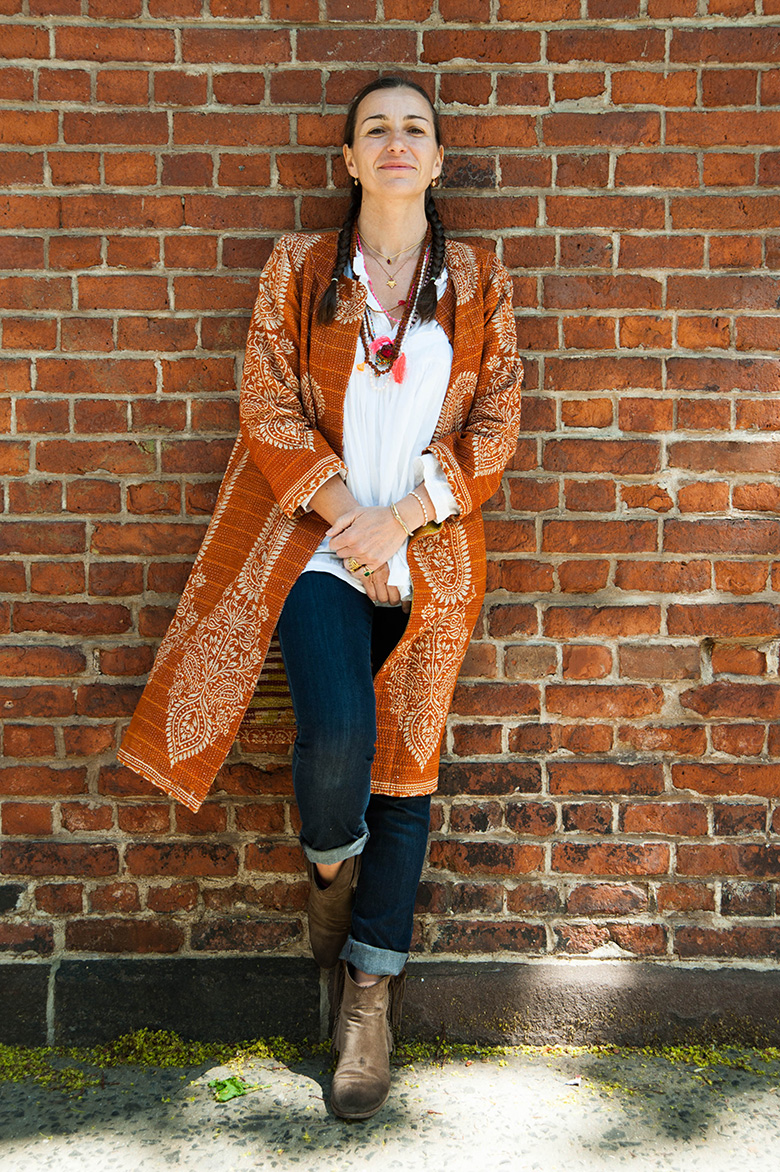Cristina Gitti : Found in Translation
“There’s such a universe and history of textiles in India that it is pretty impossible to invent anything—so I won’t take credit,” says textile designer Cristina Gitti, founder of the Matta line of accessories and apparel. “When I discover things I like, I always think: Would this work in my world?”
While her work attests to indigenous techniques such as block printing, hand dyeing, silk screening, and Lucknowi embroidery, it does so on Gitti’s own terms. “As I encountered these ancient techniques, I tried to work with my artisans to make them lighter—to transfer them into something that felt more modern but still has that handmade touch,” she says. “I wanted something you can wear easily, because you’re not going to the wedding of the maharajah every day.”
Gitti stands firm on the bedrock of these design traditions while taking creative liberties, stripping away elements that feel superfluous. Heavy beaded embroidery might be replaced with light cotton and silk tasseling; bright colors are subdued. Although Gitti has been working in India for nearly two decades (and returns up to four times per year), the country’s hues remain an intoxicating force. “You just go there—driving from Delhi to Jaipur—and you’ll see ladies in the fields with these brilliant saris. It’s mind-blowing,” she says. Time and experience have taught her to modulate that color for her largely Western audience. “I’ve learned that colors that I am totally in love with in India don’t necessarily work here: We have a different skin tone; the light is totally different.”
“I’ve learned that colors
that I am totally in love with in India
don’t necessarily work here:
We have a different skin tone; the light
is totally different.”
________
Her latest assortment of Dupatta shawls—Matta’s signature designs—is rendered in what Gitti calls “dusty” hues: rust, charcoal, slate gray. Despite this adaptation in terms of color, the traditional method of production remains unsullied: The silk and cotton pieces are first hand-woven on small looms by male artisans and then embellished with tasseling by women (a not-uncommon arrangement in textile traditions around the globe). “I love this cooperation, and the fact that doesn’t necessarily happen at the same place at the same time,” Gitti says.
“There’s a whole story a piece goes through. I’m finding more and more my customer wants to listen to stories. The clothing presents a connection to another world; they’re totally intrigued by it all. Textiles are the closest thing to your skin, so it makes sense that it is such an intimate relationship.” It’s a relationship that Gitti, a most skilled and generous translator, has gracefully facilitated.
“Textiles are the closest thing
to your skin, so it makes sense that it is such
an intimate relationship.”
________
Photographed by Alba Morassutti
Shop Matta

